All-time Super Bowl QB rankings: Patrick Mahomes passes Favre, Elway; Brock Purdy debuts at 58
I can’t tell if Patrick Mahomes is making it harder or easier to write this introduction every season. He’s always in the Super Bowl, so he’s always the topic. His greatness doesn’t change; it just deepens.
Mahomes is the best player I’ve ever seen, and it’s not that close. He’s winning like Tom Brady did at the start of his career, but Mahomes is collecting individual honors at a pace that is way ahead of Brady’s — and everyone else’s. Mahomes showed this season he could manage games and lift up inferior receivers, much like Brady did during the 2006 season, when he put up 34 points in the AFC Championship Game with Reche Caldwell as his top receiver. Dan Marino is the only quarterback whose first six seasons as a starter could compare statistically with Mahomes’ (at least within their respective eras), but Marino didn’t take up residence annually on Super Bowl Sunday. This year, Mahomes’ residency moves to Vegas.
That still doesn’t mean Mahomes is first on the list below of the best quarterbacks to start a Super Bowl, however, because this list is all about accomplishments. Every ranking needs a code, and the law of this list aims to keep things simple: order QBs based on their career achievements. Only quarterbacks who have started a Super Bowl like Marino are eligible, and the ranking does not only reflect their performances in Super Bowls.
Mahomes and Brock Purdy, who checks in on the list for the first time, have many years ahead to pile up numbers and honors. Purdy, despite being the last player selected in the 2022 NFL Draft, will wind up with more MVP votes than Mahomes this season. No matter how you feel about Purdy’s value outside the Kyle Shanahan system, he’s performed like a top-five quarterback this season. That’s remarkable for any second-year starter, much less one with Purdy’s draft pedigree. He’s clearly a better creator than his predecessor in San Francisco, Jimmy Garoppolo, and that skill will be necessary in this upcoming Super Bowl. This time around, it’s Mahomes who has the better defense.
*****
Below is my annually updated list of Super Bowl starting quarterbacks, which now includes 67 names. It’s important to note that with regard to players like Johnny Unitas and Bart Starr, who started Super Bowls but whose peak years came before the Super Bowl era, I considered their entire careers, not just what they did from 1966 onward. I ranked all quarterbacks based on career achievements, with regular-season excellence, All-Pro/Pro Bowl appearances and seasons as top-five and top-10 players at the position carrying more weight than just Super Bowl success. (Spoiler: Jim Plunkett, winner of two Super Bowls, did not have a better career than Marino, who won none.)
It’s impossible for Purdy to fare well on a list like this after only 25 career regular-season starts, but this ranking is like a low introductory offer in a negotiation. He will be rising in these ranks annually over the next decade-plus, just like his salary.
To the list!
NOTE: Arrows reflect movement from last year’s rankings.
G.O.A.T. pasture

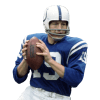
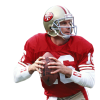

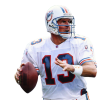



These are the men (not counting Mahomes) who could’ve made an argument for being the greatest ever until Brady’s supremacy became undeniable. The first 10 years of Brady’s career — which included three titles and an undefeated regular season — now look like an appetizer to Brady’s dominant Gronk-era peak in New England, with the three Bucs seasons thrown in as dessert. It’s easy to forget that Brady’s best years came after he was 30.
It’s impossible to truly compare across eras, because the game has changed so much, but Unitas (who played from 1956 to 1973) edges out Montana (1979-1994) and Manning (1998-2015) for the No. 2 spot because Johnny U was so clearly the best of his era and a transformative figure for the sport. Unitas collected three MVPs and five first-team All-Pro nods, and he displayed a sneaky statistical dominance compared with his competition.
Please enable Javascript to view this content
Manning ultimately overwhelms Marino, Rodgers and Favre with individual honors and consistency. He was so rarely outside the league’s top three quarterbacks during a career that included five MVPs. Until 2014 or so, most media folk still had Manning over Brady for their careers!
Marino is probably the best pure passer of this group. He was never supported with a top-10 running game, and he rarely played with a good defense. He shouldn’t suffer too much, historically speaking, just because of Don Shula’s personnel decisions. Rodgers’ back-to-back MVPs late in his career keep him up here on the leaderboard despite some rough playoff outings. It is somewhat silly to rank Mahomes right now, but even if he retired today, at age 28, his peak is worthy of this tier. His six-year run as the best player in the league is unlike anyone below and most of those ahead. Now all he needs is time. Favre has perhaps the strangest résumé. He combines a brilliant peak with three consecutive MVPs and a career famous for its durability with some lesser efficiency stats than the rest of the tier. Still, there’s not that much separating any of these guys.
The best second tier ever
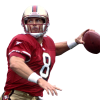

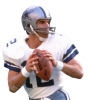


The résumés of Young and Rodgers were similar before Rodgers’ recent back-to-back MVP seasons. Both players had to wait before taking over for all-time greats.
Elway was a physical marvel, won an MVP and earned three second-team All-Pro nods in his career (1983-1998), but his passing numbers (3,217 passing yards, 19 touchdowns and 14 picks per year), even when adjusted for his era, don’t stack up with the rest of the top 10. Staubach is a great “What if?” player, because he didn’t become a full-time starter until he was 29 years old. He’s still the consensus best quarterback of the 1970s and led the league in passer rating four times. He probably gets downgraded too much for the era in which he played. Starr, who has a reputation for being a “winner” of the ’60s and early Super Bowl era without generating great stats, actually has … pretty great stats. So does Brees. He only earned one first-team All-Pro nod, because he was so often behind Brady, Manning and Rodgers, but his longevity and consistency were remarkable. He was nearly always a top-five quarterback in New Orleans.
In (or should be in) Hall of Fame


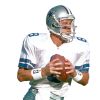
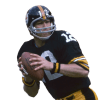

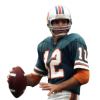
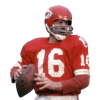
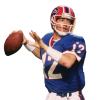
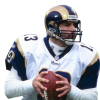
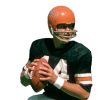
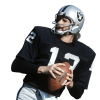

Like Brees, Tarkenton was an undersized, undervalued but consistent star with an incredibly long run of statistical dominance. Roethlisberger was a top-five quarterback for the better part of his career, especially after his second Super Bowl triumph (following the 2008 season). I’m not going to ding him for not being Brady in his late 30s. Aikman’s peak (1991-96) was impressive but unfortunately too short. Bradshaw wasn’t great in the seasons preceding his first two Super Bowl wins (1975-76), but he wound up being a league MVP (in 1978) and finishing in the top five in yards per attempt five times. Namath gets extra credit for his impact on the game, although it’s worth noting Griese had three more Pro Bowl appearances (eight to Namath’s five), one more first-team All-Pro nod (two to one) and far more seasons in the top five in yards per attempt. The offensive line and running game helped, but Griese deserves some legacy love!
Mahomes isn’t the only Kansas City Chief with an exceptional peak: Dawson was the best passer in a pass-happy league, leading the AFL in passer rating for five straight years (1964-68).
Kelly, like Aikman, had a brilliant peak that wasn’t quite as long as that of some others listed here. Warner had a singular career, getting off to a late start, then winning two MVPs and leading two different teams to the Super Bowl. Anderson still should be considered for the Hall of Fame, as he was the rare player to win MVP, Comeback Player of the Year and the Walter Payton Man of the Year award. He led the league in passer rating four times and earned a first-team All-Pro selection and another second-team nod, which is more than plenty of the names above him. Stabler finally got into the Hall in 2016, unfortunately after his passing. Even though Wilson declined earlier than some in his generation, I believe he’s passed that mythical “Hall of Famer if he retired today” benchmark.
Fun to watch

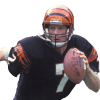
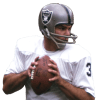



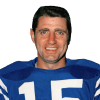

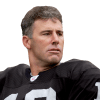
McNabb was a top-10 quarterback for nearly all of his career, very often ranking in the top five. I’m surprised he doesn’t get more Hall of Fame consideration. Esiason won an MVP (1988) and led the league in yards per attempt in that season (as well as in 1986). Lamonica was someone I didn’t fully appreciate until I started doing this exercise. While he was fattening up on a soft AFL, he made five Pro Bowls and nabbed two AFL Player of the Year awards. He finished his career 66-16-6 as a starter!
Stafford has had a similar career to Matt Ryan’s, with Ryan owning an MVP award and ranking more consistently among the top-10 quarterbacks in the league (his 2016 season stands out as anomaly, though). Stafford’s 2023 campaign was worthy of MVP consideration, however. He gets a bump in this year’s list, as his excellent run with the Rams receives added weight.
Morrall was football’s Forrest Gump, in the words of Chris Wesseling, spending most of his career as a backup, with the first of his two Pro Bowl appearances separated by 15 years from the last of his two All-Pro nods, and an MVP (earned as Johnny Unitas’ replacement) sandwiched in the middle. In one way, he’s similar to McNair. When they were good, they were very, very good. Eli’s durability and longevity boost him in a career that ended at .500 (117-117), with just three seasons in which he arguably could’ve been considered a top-10 quarterback. To the Giants fans angry about this ranking every year: It’s not measuring playoff success, it’s measuring how good a player was on a week-to-week, season-to-season basis. Eli was excellent, but no one would have taken him over McNabb, for instance. Gannon did a lot of damage late in his career, with an MVP and four Pro Bowls coming after he turned 34.
Crazy talent for a tier this low

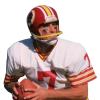





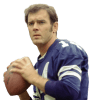


Cam and Theismann have MVP seasons and a few Pro Bowls to their names, but they both had some erratic play to go with their big arms and big personalities.
Simms and Jaworski have somehow become underrated over time and are now better known for their careers as broadcasters. Both had plenty of seasons as top-10 quarterbacks. Morton, a Super Bowl starter for two different organizations, somehow never made a Pro Bowl despite leading the league in yards per attempt three times. Collins was a season-long starter for four different organizations, making his two Pro Bowl appearances 12 years apart. Plunkett started 144 games yet never made a Pro Bowl and probably only had one or two seasons in which he could have been considered a top-10 starter.
Burrow is an example of how this exercise is impossible when it comes to ranking young players. His highs are already higher than those of most QBs in this tier, but his 2023 season will go down as his second incomplete campaign in four years.
Middle of the pack

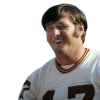


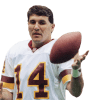
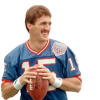




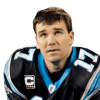




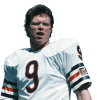
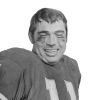



Goff made one of the biggest leaps this year. Not only did he put together a top-10 season, he was on the doorstep of playing in another Super Bowl while leading an elite Lions offense. Flacco also gets some love for a surprise final act (presumably) in Cleveland. If 2023 was Joe’s last time in the spotlight, he went out memorably, though he wasn’t a consistent top-10 starter and never made a Pro Bowl.
Purdy has only started a season and a half, but he’ll finish in the top five in MVP voting in his first full season as a starter. He’s clearly an upgrade from Jimmy G, who has only played two full seasons as a starter (2019 and 2021) and may not necessarily get another chance. Foles produced one of the best performances in Super Bowl history, then supported it with another strong close to the season in 2018 as Carson Wentz‘s backup. His peaks, including his 2013 Pro Bowl year, have been awfully high. His valleys, like his brief run as the Jaguars’ starter and his time in St. Louis and Chicago, have been rather low. Chandler gets credit for grinding through over 150 starts, with a way fancier peak than some might have expected. Johnson and Hostetler both had better tenures than I remembered on teams they didn’t win Super Bowls with: Johnson made a Pro Bowl with Washington, Hostetler with the Raiders.
Hurts has only been a starter for three seasons, but he’s finished second in MVP voting and helped his team to the playoffs three straight times. He’ll likely climb a tier or three before he’s done.
Kapp had only one great year and 48 starts, his career ending too soon because of contractual issues. Kaepernick only made 58 starts. At 36 years old and now seven years removed from his last season, he will be remembered for standing up for what’s right more than anything he did with a football. But don’t forget how sweet he was for a stretch on the field. He has 72 touchdowns and 30 interceptions for his career, excelling in the type of quick-game offense that is more popular in the NFL now than it was when he was playing. The abrupt end to his career will be a stain on the NFL in the history books.
End of the line

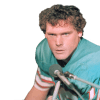

Eason had a few solid seasons, but he only started for one more full season after the Super Bowl appearance that capped the 1985 campaign. Grossman only had three seasons where he started more than three games (2006, ’07, 2011), but at least “Sexy Rexy” has a nickname that will live forever.
Follow Gregg Rosenthal on Twitter.
The Air Index presented by FedEx evaluates NFL quarterback performances all season long. Cast your vote for the FedEx Air Player of Year.


